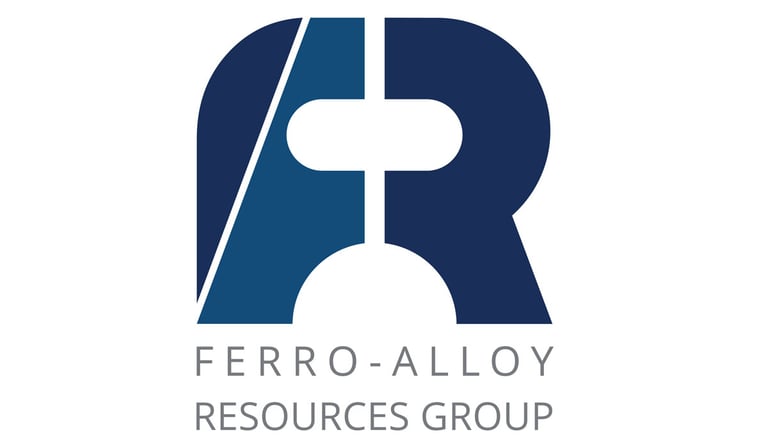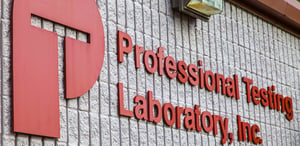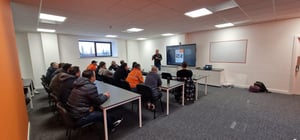Ferro-Alloy Resources Ltd (LON:FAR), the vanadium producer and developer of the large Balasausqandiq vanadium deposit in Southern Kazakhstan, has announced its unaudited results for the six months ended 30 June 2020.
Highlights:
· Record high production: 98 tonnes of vanadium pentoxide in the first half compared with 71 tonnes production in the same period last year in spite of COVID-19 and continuing power interruptions
· Record high shipments to customers: 109.2 tonnes of vanadium pentoxide compared with 79.6 tonnes in the same period last year
· Supplies of high grade concentrates secured under long term contract
· Hydrometallurgical line closed because of COVID-19 for the three months from March until May but pyrometallurgical operations continued throughout
· Upgrade to local feasibility study at the Balasausqandiq Vanadium Project continuing
· Prices of vanadium pentoxide have been relatively stable in 2020, having fallen throughout 2019 from the peak of around $30/lb in late 2018. The current level of around US$5-6/lb is lower than historic averages.
Post-Period:
· Step-increase of around 100% in production after the period end, with a total of 70 tonnes of vanadium pentoxide produced in the first two months of the third quarter compared with an average production of 16.3 tonnes per month in the first half of 2020
· Technology developed for the production of electrolyte for vanadium flow batteries
· Equity and Bond fundraisings completed totalling c. £1.23m
Operations Review
The existing vanadium concentrate processing operation
In spite of cut-backs to the investment programme caused principally by the COVID-19 pandemic, major improvements to the production facilities at the Company’s existing operations have been made. In particular, the new pyrometallurgical process line has been completed with the installation of the second of two roasting ovens and the expansion of the leaching circuit, as well as two press-filters commissioned. This resulted in an increase in production of 38% in the first half of 2020 and would have been higher but for COVID-19 restrictions and continuing power outages. Starting from July 2020, production has doubled compared with the average monthly production last year and there is significant capacity for higher production when the COVID-19 restrictions are ended and power interruptions are resolved.
| Period | Production(tonnes of vanadium pentoxide contained in AMV*) | Growth vs last period | Shipments(tonnes of vanadium pentoxide contained in AMV*) | Growth vs last period |
| Q1 2020 | 49.1 | +53% | 61.0 | +56% |
| Q2 2020 | 48.9 | +25% | 48.2 | +19% |
| H1 2020 | 98.0 | +38% | 109.2 | +37% |
* AMV: ammonium metavanadate
The installation of new equipment and ongoing research work has led to continuing improvements in operating regimes for processing a wide variety of vanadium-containing concentratess in the pyrometallurgical line. Commercially, we have signed long term agreements to receive high grade raw-materials making up 100% of current output.
Starting from July 2020, production of V2O5 contained in AMV increased significantly even compared with the increased levels of the first half year. Production in July and August totalled 70 tonnes, an increase of over 100% more than the average in each month of the first half of 2020.
Outlook for the existing operation
Whilst record production has already been reported as a result of recent improvement work, further increases are expected to come in the remainder of the financial year and beyond.
The new operating regimes and supplies of concentrates which, combined with the improvements already made, are expected to result in up to 60 tonnes of vanadium pentoxide to be produced per month. However, this increase can be impacted by the unreliability of the current power supply, making completion of the connection to the existing high voltage power line critical for further sustained growth. Construction of the connection was frozen during the COVID-19 state of emergency and quarantine restrictions but was restarted in September with completion planned, COVID-19 permitting, around the end of Q1 2021.
A dissociation oven has already been procured which will enable the Company to produce vanadium pentoxide powder and eliminate the discount which applies to the current production of AMV. The main equipment is already on site but installation was temporarily halted during the state of emergency and quarantine lock-down. Installation is now being resumed, with completion expected towards the end of 2020.
Balasausqandiq
Development of the large Balasausqandiq vanadium deposit is on-going in parallel with the Company’s existing operations.
Balasausquandiq has a significant advantage when compared with most other vanadium deposits and producers in that the ore is not vanadiferous titano-magnetite (“VTM”) and therefore does not require the expensive concentrating and high temperature roasting which VTM requires. This reduces both capital and operating costs by about 60% and is likely to make the Group the lowest cost primary producer. The proposed development is planned in two phases to produce up to 22,400 tonnes per year of vanadium pentoxide which, at a long-term price assumption of $7.50/lb of vanadium pentoxide, will result in a Net Present Value (at 10% discount rate) of over US$2 billion.
The Company has previously completed a feasibility study to locally required standards, supplemented by a western-style JORC reserve and resource estimate and the construction and operation of a 15,000 tonnes per year pilot plant which demonstrated the effectiveness of the proposed process. A completed gap analysis has highlighted relatively small areas where further work is required to meet the standards of a typical western banking feasibility study which is ongoing.
Corporate
The Company listed on the new Astana International Stock Exchange (AIX) on 6 January 2020 and consequently delisted from the Kazakhstan Stock Exchange (KASE) on 21 February 2020. The Company’s primary listing remains the London Stock Exchange.
On 6 April 2020 the Company issued 500,000 shares to a provider of financial services as payment for their services. On 14 May 2020 the Company issued 3,846,154 shares to raise £0.25m, on 3 September 2020 the Company issued 6,250,000 shares to raise £0.5m and on 16 September 2020 the Company issued 6,250,000 shares to raise a further £0.5m.
During the first half of 2020 the Company issued unsecured corporate bonds totalling US$0.3m and since the end of the period, in September, a further US$0.3m have been issued. The bonds were issued under the terms and conditions set out in Terms and Conditions of the Bonds in accordance with the rules of the Astana International Financial Centre which stipulate an amount per bond of US$2,000, a fixed maturity date of 17 March 2023 and interest rate, based on the nominal amount, of 5.8% per year, paid twice-yearly on 17 September and 17 March. The bonds are unsecured. Investors have the right to require repayment after a minimum period of one year by giving 30 days notice. To take account of the different dates of actual issue and prevailing market terms for interest, the actual amount subscribed for the bonds is adjusted to a premium or discount from the nominal amount to secure the agreed effective interest rate.
Issued during the half year to 30 June 2020:
| Issue Date | Number of bonds of $2,000 each | Amount advancedUSD | Earliest repayment date | Effective interest rate |
| 5 June 2020 | 50 | 100,000 | 05.07.2021 | 7.50% |
| 11 June 2020 | 100 | 200,000 | 11.07.2021 | 7.50% |
Issued since the end of the period:
| Issue Date | Number of bonds of $2,000 each | Amount advanced | Earliest repayment date | Effective interest rate |
| 1 September 2020 | 5 | 10,624 | 01.10.2021 | 5.8% |
| 9 September 2020 | 150 | 300,114 | 09.10.2021 | 7.00% |
Vanadium prices in the period
Prices of vanadium pentoxide have been relatively stable in 2020, having fallen throughout 2019 from the peak of around US$30/lb in late 2018. The current level of around US$5-6/lb is lower than historic averages.
During 2019 the Group procured certain raw materials at prices based on the much higher vanadium prices prevailing at the time. As these materials can take several months for delivery and processing, they were purchased at higher prices than those prevailing when the end product was sold, which exaggerates the negative effect on trading profits during periods of falling prices. This had a significant impact on the financial results during the first half of 2020 but does not occur during periods of stable prices and the effect is reversed when prices rise.
Vanadium prices are currently impacted by COVID-19 but medium and long term forecasts indicate the likelihood of a recovery as world demand increases and new primary producers will be required to meet demand. The Group is continuing to work under the long term assumption for vanadium pentoxide of 6.75 USD/lb in 2021 and 7.5 USD/lb thereafter, both of which are less than published forecasts. If prices follow these lower long term assumptions, there is likely to be a significant improvement in profitability. The effect will be magnified when the Group commissions the equipment to convert AMV to vanadium pentoxide and the power supply issues are resolved by the installation of the new connection to the adjacent high voltage line.
COVID-19
The COVID-19 pandemic has been experienced in Kazakhstan in two waves. On 16th March 2020 Kazakhstan declared a state of emergency which ended on the 11th May 2020. Quarantine restrictions were quickly imposed and started to be relaxed in June but this resulted in a second wave during July and early August. The Kazakhstan Government again responded rapidly and reimposed a second national quarantine which ended on 17th August 2020. Cumulatively, there have been around 110,000 cases and 1,700 deaths. The daily rate of confirmed infections has now been reduced from nearly 2,000 per day in July to under 100 and international flights have resumed with a number of countries. Given the increasing cases being seen in various parts of the world, the Company will continue to monitor the situation in Kazakhstan and follow government guidance.
Operations during the first half of the year continued throughout but were impacted in several ways. The Company’s main operation in Kazakhstan is manned by two teams of workers, each working for half of the month while residing on site, followed by half of the month on leave. During the lock-down it was not possible to rotate staff as usual, or to bring some professional managers to site from their homes which in many cases are long distances from the operation. Bringing some subcontractors and their equipment to site was also impossible. As a result, the decision was made to close the hydrometallurgical line for three months during March to May, resulting in lost production in the region of 30-33 tonnes of vanadium pentoxide. Delays have been experienced in the installation and commissioning of new equipment and repairs of existing equipment, and continuing shortages of technical staff have impacted the efficiency of operations. The gradual easing of travel restrictions and the return of normal activity in the wider economy are slowly diminishing these operating problems.
The protection of the health and safety of our employees is our paramount concern and the Company has implemented all the measures recommended and required by the Kazakhstan authorities.
Earnings and cash flow
The Group generated total revenues of US$1.1m for the period (2019: US$1.1m) reflecting the low market prices offsetting the strong growth in production and shipments.
Gross revenue for the first six months of 2020 was US$1.2m compared with US$2.0m in the first half of 2019. However, the latter figure was reduced by $0.9m by other revenue, reflecting the adjustment to price after delivery and fair value changes, whilst there was little change in other income to the total for the first half of 2020. Revenue, and the corresponding trade receivable, are recognised at the time of transfer of control to the customer but, as is common in the industry, the final pricing determination is often based on assay and prices after arrival of the goods at the port of destination. Therefore, revenues recognised at the time of shipment are subject to adjustment to prices prevailing up to four months later. Typically, the customer makes a provisional payment based on volumes, quantities and spot prices at the date of shipment and makes a final payment once the product has reached its final destination. As a result, when prices are rising, the final receipt can exceed the initial revenue recorded and vice versa. Where prices decrease significantly, this can result in the Company being in a net payable position if a downward adjustment to the consideration exceeds the provisional payment received.
Cost of sales increased to US$1.9m (H1 2019: US$1.3m) reflecting the increased volumes and processing of vanadium catalysts in the pyrometallurgical line that were purchased at the high prices prevailing at the end of 2018.
Strong control of overheads resulted in administrative expenses of US$0.7m, 22% below last year (H1 2019: US$0.9m).
The Group made a net loss before and after tax of US$1.7m (H1 2019: loss of US$1.3m).
Net cash outflows from operating activities totalled US$0.7m, reflecting the strong cash flow management initiated by the Group during COVID-19 pandemic and low vanadium prices (H1 2019: cash outflow US$2.3m). Investment activities and capital expenditure were reduced, with net cash outflows from investing activities totalling US$0.07m (H1 2019: US$0.5m). Net cash inflows from financing activities totalled US$0.7m (H1 2019: US$6.6m) being the proceeds, net of commissions, from equity and bond issues.
Balance sheet review
Non-current assets totalled to US$4.7m at 30 June 2020 (2019: US$5.1m), reflecting low investment activities during the COVID-19 pandemic.
Current assets excluding cash balances totalled US$1.7m (2019: US$1.8). Higher trade and other receivables and prepayments were offset by lower inventory levels.
The Group had cash of US$0.4m at 30 June 2020 (2019: US$0.6m) and borrowings in the form of bonds of US$300,000.
Description of principal risks, uncertainties and how they are managed
The risks and uncertainties which the Group is facing are as set out in the financial statements for the year ended 31 December 2019 in the CEO’s Report on Operations as published on 27 June 2020. In addition, there is a risk that further waves of the COVID-19 pandemic might cause the imposition of further lock-downs and might impact production through its impact on the company’s development plans, availability of technical specialists and the performance of sub-contractors, as well as on world demand for and prices of vanadium. Furthermore, until the connection to the new power-line, now planned for the end of the first quarter 2021, there may be interruptions to production from planned and unplanned power outages outside the control of the Company.
Responsibility statements
Directors’ Responsibility Statement
We confirm that to the best of our knowledge:
a) the Condensed set of Interim Financial Statements has been prepared in accordance with IAS 34 ‘Interim Financial Reporting’;
b) the interim management report includes a fair review of the information required by DTR 4.2.7R (indication of important events during the first six months and description of principal risks and uncertainties for the remaining six months of the year);
c) the interim management report includes a fair review of the information required by DTR 4.2.8R (disclosure of related parties’ transactions and changes therein); and
d) the condensed set of interim financial statements, which has been prepared in accordance with the applicable set of accounting standards, gives a true and fair view of the assets, liabilities, financial position and profit or loss of the issuer, or the undertakings included in the consolidation as a whole as required by DTR 4.2.4R.
This Half Yearly Report has been approved by the Board and signed on its behalf by:
Nicholas Bridgen
Director









































